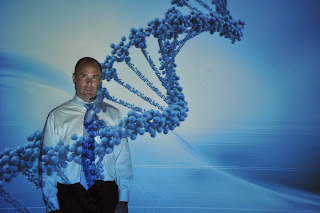 Dr. Todd Armstrong studies the links between genes and crime.
Dr. Todd Armstrong studies the links between genes and crime.Researchers at Sam Houston State University have found a genetic characteristics that interacts with childhood adversity to predict higher rates of crime in an incarcerated sample.
The study is the first in a series that will examine contributions of genetic and environmental variations to criminal behavior. Published in Psychiatric Genetics, this study examines the role of monoamine oxidase A (MAOA), which has been linked to aggression and violence, and various types of childhood adversity in prior research. The study found MAOA genotype interacted with childhood adversity to predict self-reported criminal behavior and arrest rates for both property and violent crime.
 “These findings indicate that gene-by-environment interactions are important for understanding variation in crime amongst populations with high base rates of criminal activity,” said Dr. Todd Armstrong, the principal investigator of the study.
“These findings indicate that gene-by-environment interactions are important for understanding variation in crime amongst populations with high base rates of criminal activity,” said Dr. Todd Armstrong, the principal investigator of the study.
The study was based on a sample of about 100 inmates from a correctional institution in the Southern United States. Sample members were convicted of wide variety of charges, including violent crimes, drug offenses, property crimes, disorderly conduct and weapons offenses. In addition to collecting and analyzing DNA, researchers conducted surveys of offenders and examined their criminal histories.
No comments:
Post a Comment